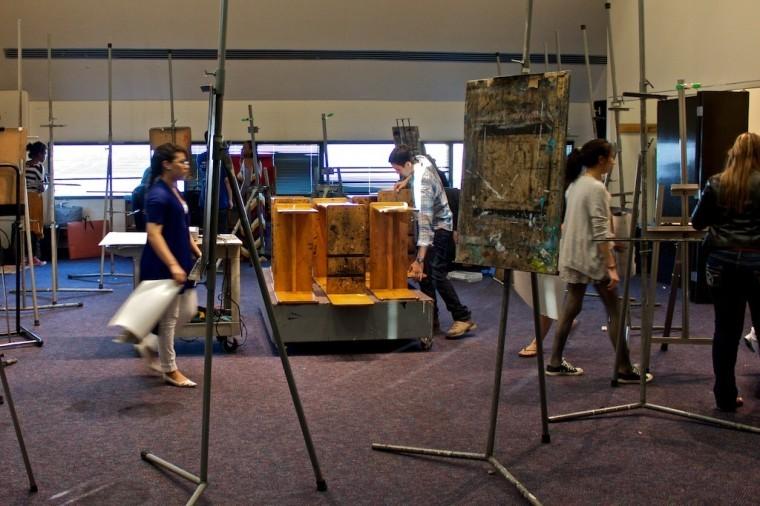UMass Boston is mainly a liberal arts college or research university, but did you know that our school offers a general major in art where one can focus on either Art History, Studio Arts or both?
The art department here at UMass is structured quite similarly to our many liberal arts majors and requires 12 courses from the 100-400 level. This includes a capstone course which must be completed during the last year in order to receive your bachelor’s degree. Also like other majors, the 100-200 levels usually don’t require pre-requisites while the more advanced 300-400 levels do.
Courses offered here on campus include studio classes in video, digital imaging, sculpture, printmaking, photography and painting. Art history courses cover everything from ancient to modern art including Renaissance, Romanesque, Gothic and Western and Asian art and architecture. Victoria Weston, current chair of the art department says, “[The Art Program] is a dynamic program, we have roughly equal representation between studio art and art history, [and] cover a great range of topics and media.”
The faculty teaching these courses also includes some of the most qualified professors in the country and is comprised of not only published scholars but also well-known artists. Weston confirms, “Being an art major at UMass Boston means having contact with tremendous faculty.”
This includes published authors like Art History Professor Pamela Jones who co-wrote “Federico Borromeo’s Sacred Painting: Museum” with UMass classics professor Kenneth Rothwell, and Ancient and Medieval Art Professor David Areford, author of “The Viewer and the Printed Image in Late Medieval Europe” published in 2010.
Professor Wilfredo Chiesa who teaches Painting Workshop and Drawing I is a painter himself whose works have been included in collections at The Museum of Modern Art Sao Paulo, The Museum of Modern Art Bogotá, The Museum of Fine Arts Boston, Harvard University, The National Library in Paris and more. So far he has had more than thirty international exhibits showcasing his work.
Professor of Intro to Digital Media Art, Cat Mazza, currently has artwork on display at The Smithsonian American Art Museum as part of the “40 under 40: Craft Futures” exhibit. Another professor, Erik Levine, who teaches Intro to Sculpture, has been included in collections at The Whitney Museum of American Art, The Museum of Contemporary art in Los Angeles and The Walker Art Institute, among others. He has also won several awards including the Guggenheim Fellowship.
Paul Tucker, a professor of art specializing in 19th and 20th century art, has published 11 books, been a guest curator of at least six considerable art exhibitions, and was also called “…one of America’s foremost authorities on Claude Monet and Impressionism” by Time Magazine.
Of course this is just some of the talented faculty part of the art department at UMass Boston, which is certainly comparable to that of other art schools. So now that we know our faculty measures up, how does everything else compare to an art school?
Weston says it’s somewhat different. “Our Studio Art courses are the standard Liberal Arts College class length rather than an Art School.” This means that studio courses at art schools actually have longer class time. However, Weston adds, “The Liberal Art setting offers a student much more in building context, understanding the world in a broader way [and] putting a work of art into some kind of social, political [or] cultural setting.”
Cross-registration at The Massachusetts College of Art is also something many students may not know is offered by the Art Department. This means you can register for classes at Mass Art at no extra cost as long as you’re a full-time student at Umass Boston. You can then transfer the credit back to your UMass Boston transcript.
So what exactly does it mean to be an art major at The University of Massachusetts Boston? Weston declares it means an exceptional range of offerings. “It means learning critical skills for life through visual analysis and thinking visually and in addition to trying to put what you understand into words it is an excellent medium to really hone visual ways of critical thinking.”





















































